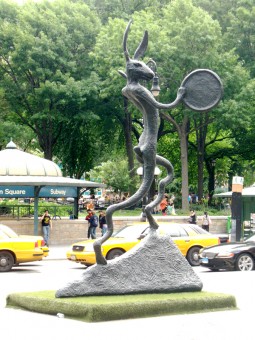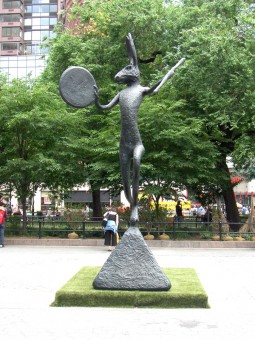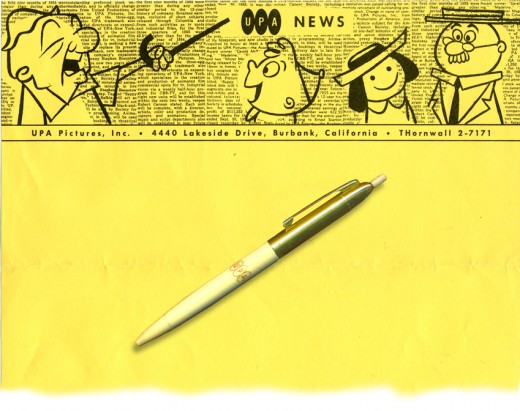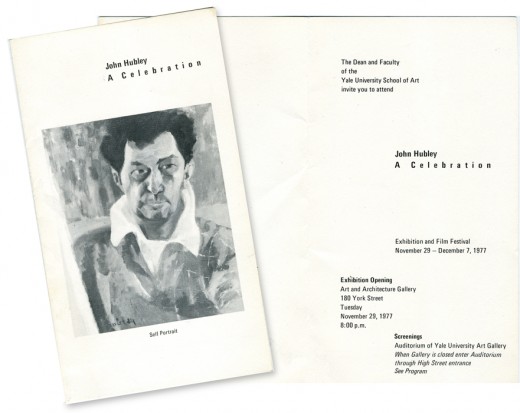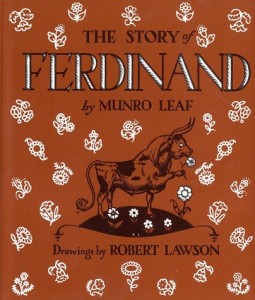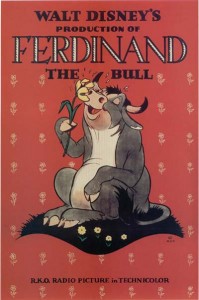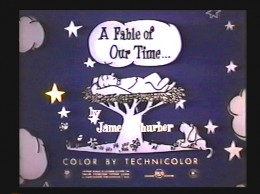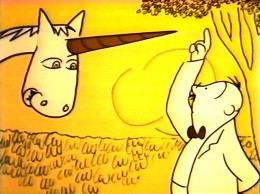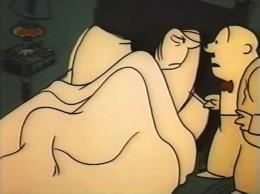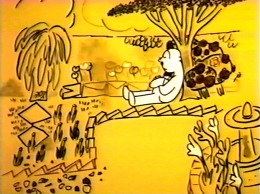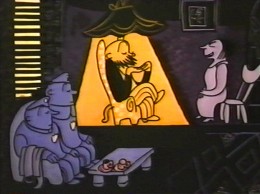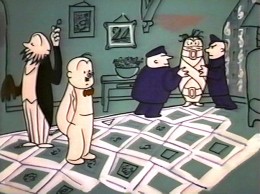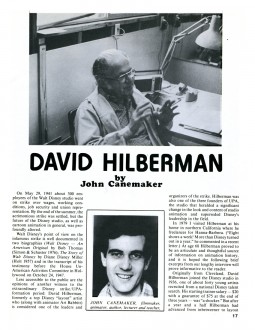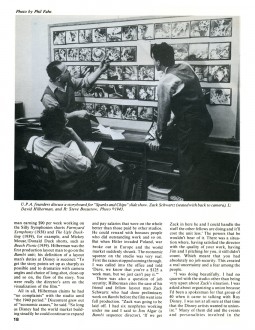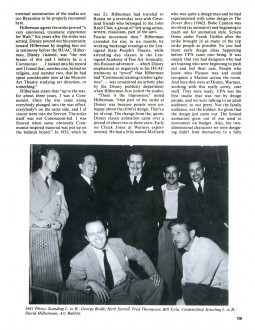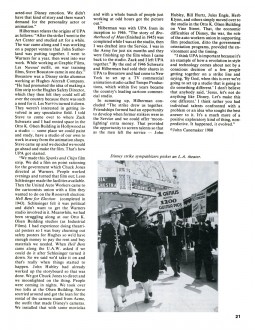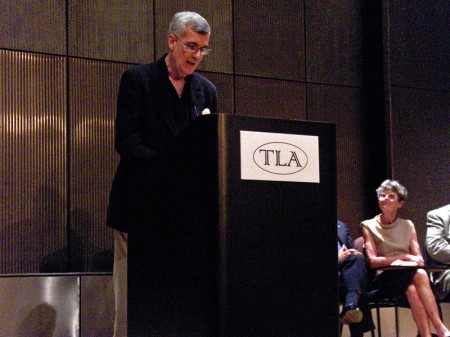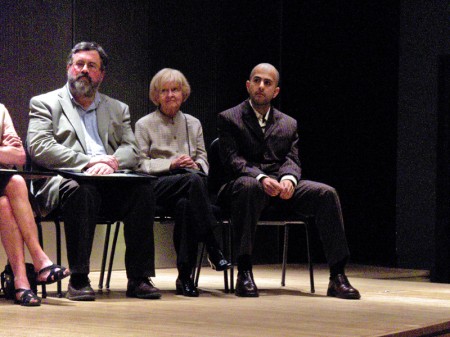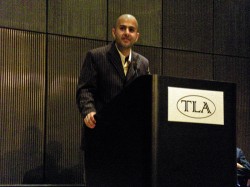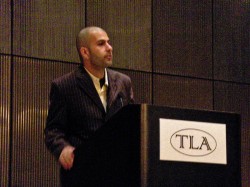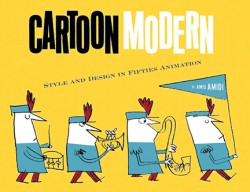Monthly ArchiveJune 2007
Art Art &Commentary 10 Jun 2007 10:21 am
Two Statues
- One thing about New York is that there are a lot of statues. Lots of parks filled with lots of statues of late Presidents, generals, soldiers. As we saw in Balto, there’s even a statue of a dog that saved some lives. Not too long ago I posted some steel silver statues of trees as they grew in Madison Square Park. I have a fascination with a lot of the old guy statues that also fill up that park and how they’re all staring at the center – those steel trees.
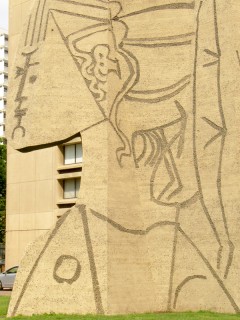 But I thought I’d post some pictures of two statues that fascinate me. One that I see almost daily since moving to the village is the big Picasso statue that graces NYU’s apartment complex on Bleecker Street. Unlike the massive Picasso statue in the center of Chicago, this one is not made of metal. It’s stone. Oddly it almost looks like a statue that was made by an admirer of Picasso’s – it’s almost too Picasso-like. But there’s a lot I like about it.
But I thought I’d post some pictures of two statues that fascinate me. One that I see almost daily since moving to the village is the big Picasso statue that graces NYU’s apartment complex on Bleecker Street. Unlike the massive Picasso statue in the center of Chicago, this one is not made of metal. It’s stone. Oddly it almost looks like a statue that was made by an admirer of Picasso’s – it’s almost too Picasso-like. But there’s a lot I like about it.
I like how it almost exploits the cubist thing as you walk around the statue the size and shape of the head changes. Angles are everything with this lady. As you move around her things keep changing. It makes me curious to know what it looks like from above (like from the roof of the building behind it.)
The color seems designed to almost perfectly match the buildings that stand around it. (Or maybe the buildings were designed to match the statue.) The engraved lines that shape her face use the shadows they create to make them lighter or darker depending on the overhead light.
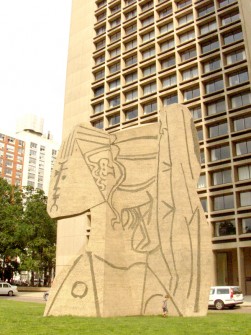
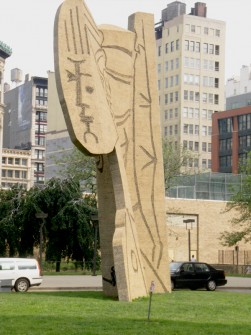
Look how her chin looks completely different as you move around her. The same is true
of the entire statue.


As you turn from back to front the whole statue looks completely different. It’s a great piece.
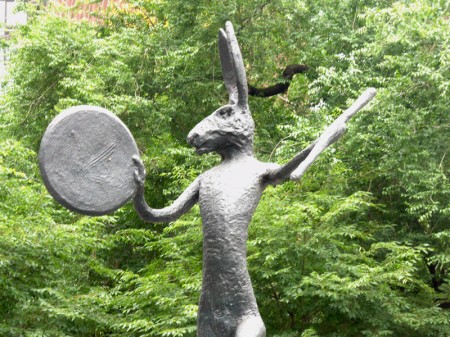
.
Then there’s the rabbit. This piece stands on a small traffic island at the base of Park 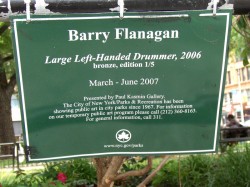 Avenue as it reaches 14th Street. The statue stands at one of the entrances to Union Square Park. If you’re heading to the Farmer’s Market situated within this park, it’s likely you’ll pass this statue.
Avenue as it reaches 14th Street. The statue stands at one of the entrances to Union Square Park. If you’re heading to the Farmer’s Market situated within this park, it’s likely you’ll pass this statue.
The statue is by Barry Flanagan. Apparently he did five of these rabbits (though I haven’t seen any of the others.)
He’s an Irish artist who has done quite a few sculptures of rabbits and other animals. He died in 2005.
(Click on any image to enlarge.)
There’s just such a wide diversity of public art on display; it always stirs me.
What a creative place to live.
Animation Artifacts 09 Jun 2007 08:54 am
Rico LeBrun model sheets
LeBrun did many drawings and studies for Bambi’s animators.
A few months ago I bought a model sheet from Bambi which he had drawn. It analyzed a deer’s skeletal system for the animators. Here’s the model sheet posted below.
I’m also posting another that LeBrun did which was printed in Robert Feild‘s 1940 book, The Art of Walt Disney.
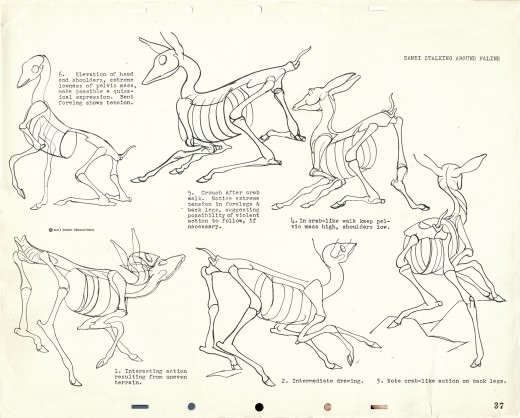
The Rico LeBrun model sheet printed onto a 16 field sheet of Disney animation paper.
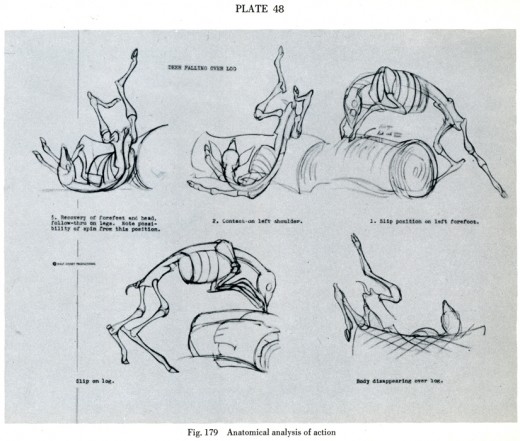
The Rico LeBrun model sheet that was published in the Robert Feild book.
(Click either image to enlarge.)
Commentary &Daily post 08 Jun 2007 08:04 am
More Talking Animals
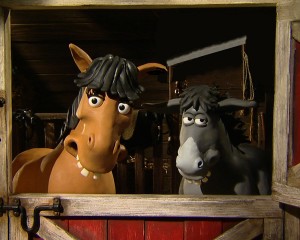 – This past Monday, CBS premiered Aardman Animation‘s Americanized version of Creature Comforts. Interesting that I didn’t see much on the animation sites about its premiere. The show will air at 8pm until CBS starts playing with their schedule. (Isn’t this what always happens these days?)
– This past Monday, CBS premiered Aardman Animation‘s Americanized version of Creature Comforts. Interesting that I didn’t see much on the animation sites about its premiere. The show will air at 8pm until CBS starts playing with their schedule. (Isn’t this what always happens these days?)
Fox also premiered the third-season of reality show Hell’s Kitchen at the same time. With plenty of promotion, this was the top-rated show Monday night among adults 18 to 49 with a 3.6 rating in the preliminary Nielsen ratings.
Creature Comforts had a modest 1.8 premiere in its 8 p.m. time period. That made it 2nd in the time slot.
Richard Goleszowski acts as the show’s supervising director. He also supervised the UK version of the show. Like all other Aardman work, the timing is just about perfect, the humor is subtle, and the whole is enjoyable. The only problem I have with the show is that I get impatient with a half-hour of 1 or 2 minutes clips that are disconnected.
You can watch the entire first episode on line. here.
- In case you haven’t yet read it, Wade Sampson has a good article on MousePlanet that fills in on a lot of the history of the Three Little Pigs. The article ends with a discussion of a four minute film done in 1962 by Bill Justice and Xavier Atencio for a Mexican feature as a way of raising money to help Mexican children get a free daily lunch in school. The article also leads to a YouTube link to see the animated segment they produced.
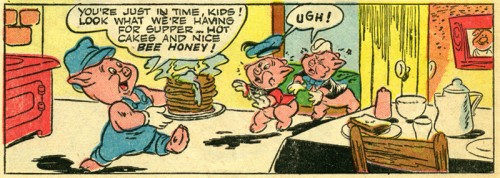 ___________________________________
___________________________________ 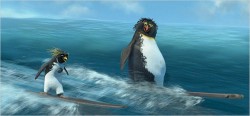 Surf’s Up opened today to luke warm reviews in NYC. Here are bits from two of them.
Surf’s Up opened today to luke warm reviews in NYC. Here are bits from two of them.
Jack Matthews of the NYDaily News, who gave it 2½ stars, said:
- Tired of penguins yet?
“Surf’s Up,” the latest computer-animated cartoon from Sony Pictures Animation, takes the form of a mock documentary covering a penguin-dominated surfing championship. The movie itself is trying to catch a wave; whether that wave is still cresting or about to collapse, we’ll soon find out.
Adult fans of “Happy Feet” will find “Surf’s Up” a middling trifle.
Jeanette Catsoulis of the NYTimes, in a very short, ho-hum review, wrote:
- Ever since Luc Jacquet’s endearing documentary “March of the Penguins” persuaded Hollywood that penguins are the new Bambis, we have endured singing, wisecracking and even tap-dancing versions. Now, treading eagerly on the flippers of last year’s “Happy Feet,” comes “Surf’s Up,” a computer-animated comedy featuring birds on boards.
. . . a moratorium on penguins might be called for, despite the inevitable anthropomorphic void. Lord help us if “Ratatouille” is a hit.
I’d like to highlight two working Independent animators in New York who have mastered Flash and have been doing unique, stylish films in the medium:
- Xeth Feinberg has created a character I’ve loved (it was probably the first Flash film I’d 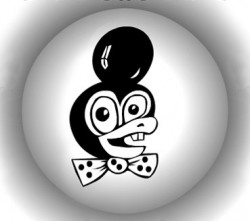 seen on-line). Certainly most of you have seen Bulbo in A Brief History of the Twentieth Century. This and a number of other Bulbo spots are still available for viewing at Xeths’ site. It’s worth revisiting to see how solid a video this is. Still thoroughly enjoyable.
seen on-line). Certainly most of you have seen Bulbo in A Brief History of the Twentieth Century. This and a number of other Bulbo spots are still available for viewing at Xeths’ site. It’s worth revisiting to see how solid a video this is. Still thoroughly enjoyable.
Xeth has done a feature film with his more popular character, Queer Duck, but I still feel more of an affinity toward Bulbo. Perhaps he’ll make more of these entertaining short pieces.
- And let’s not forget Nina Paley, as long as we’re talking productive, Flash designer/animators. Nina’s done quite a few animated shorts, with over 40 minutes of them making up parts of an animated feature she’s creating solo.
 Most of her films are available for viewing on her site with Sita Sings the Blues (the feature) featured on its own page. There’s a real intelligence behind her films and a great sense of style behind the graphics. If you haven’t seen her work, go.
Most of her films are available for viewing on her site with Sita Sings the Blues (the feature) featured on its own page. There’s a real intelligence behind her films and a great sense of style behind the graphics. If you haven’t seen her work, go.
All of the current parts of the feature will be screened at the upcoming Platform Animation Festival.
Animation Artifacts 07 Jun 2007 07:23 am
Odds & Ends
- Here are some bits and pieces of memorabilia I have in collection. (Boy do I own a bunch of crap!) However, maybe altogether it makes for an interesting post.
- First up in this UPA week is a piece of stationery from the UPA studio. The oddity of it is that the paper is not 8½ x 11 but 8½ x 14. To make it a bit more interesting, that’s a UPA ballpoint pen atop the paper. (Yellow!)
- John Hubley was an extraordinary artist. Every drawing he made, had three dimensions (no matter how flat the image was supposed to be.) His simplest sketch had such depth. Naturally, he was an amazing painter as well. His oil paintings were a bit impressionist/a bit surrealist/all original. He seemed somewhat inspired by Chagall.
John and Faith would both go to their respective studios every day to oil paint before they came into work. They usually arrived in the animation studio between 9:30-10:00 am. That means they were in there painting early. They took art seriously.
Here’s an invitation to an art exhibit held at Yale, where John & Faith taught. (The original was B&W; the painting was in color.)
- Finally, another invitation, this one for the “World Preview” of Ragggedy Ann & Andy. The character drawing was done by Dan Haskett and was the poster image for the feature film. Perhaps I’ll post some Raggedy art later this week.
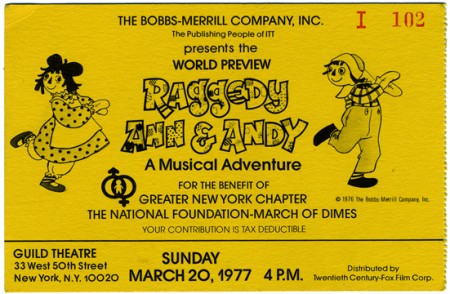
There was some question as to who owned the rights to this film when, a year or so ago, Greg Ford was putting together a program of musical animated films for Lincoln Center. Greg couldn’t track down who would give proper permission for screening of a 35mm scope print. I wish someone would get it together.
Richard Horner was one of the producers representing Bobbs Merrill. He was originally a theatrical producer with an extensive and prestigious background who moved onto this film to produce.
He and I had a couple of meetings a few years before he died. He was producing some videos (pre-dvd) showing artists at work. His first was a video of Philip Pearlstein in his tudio painting a canvas. Horner, at the time, couldn’t find a distributor for the tapes, although they were already in all of the museums on the east coast. I tried to help but we didn’t get anywhere. Unfortunately, he died in 2002. He’s the last person I would’ve been able to contact for information about the film.
Animation &Commentary &UPA 06 Jun 2007 07:55 am
Unicorns In The Garden
If you think back to how children’s books were adapted in animation prior to the 1950′s, you might think of Ferdinand the Bull by Munro Leaf with illustrations by Robert Lawson. Disney’s oscar winning short followed the story closely but ignored the book’s sensitive illustrations. Disney’s short went so far as to caricature Disney and a number of his animators in the cartoon style of the film.
Or you might think of E.H. Shepard‘s delicate watercolors for Kenneth Grahame‘s book, The Wind In The Willows. This delicacy was completely lost when the Disney artists revised the characters, in a somewhat brash cartoon way, for their film. The same was true of Disney’s adaptation of Shepard’s Reluctant Dragon. Shepard didn’t fare well even into the ’60s when Disney artists adapted his Winnie the Pooh to animation.

There are many other variations on this theme wherein animators completely rework beautiful illustrations of children’s book illustrators and rework stories of the book authors. (For one of the vilest variations look at William Steig’s stunning book, Shrek and compare.)
In 1952, UPA successfully and faithfull adapted Ludwig Bemelman’s book and style of painting to animation. Their film Madeline was a very successful short which was nominated for the Oscar. Almost a year later, UPA decided to adapt James Thurber’s whimsical story, The Unicorn In The Garden, to animation.
Thurber was a New Yorker cartoonist and doodler cum cartoonist. He was enormously successful at his trade, and the book which included “Unicorn In The Garden” was The Thurber Carnival. We know that UPA was considering the entire book of short stories as an animated feature and were calling it Men, Women and Dogs. The feature was scripted. For whatever reason (I’m sure someone out there knows, and I assume it has something to do with Joseph McCarthy), the feature was abandoned, and the short was completed.
They remained absolutely faithful to Thurber’s story and drawing style even though the very short story had only one drawing (and not one of Thurber’s best.) I’ve placed both the story and animated film at the end of this post if you want to compare.
Off the top of my head, I can only think of two other occasions that Thurber’s style was adapted to animation. Both the Jack Lemmon vehicle, The War Between Men and Women, and the tv show, My World and Welcome To It, which starred William Windom, adapted Thurber to animation as an aside to the “cartoonists” featured in the live action. Both were produced by Melville Shavelson and had similar setups – daydreaming cartoonist bumbles through his life with his alter ego being represented by the animation.
The original UPA short, to me, is beautifully animated, designed (around Thurber’s B&W drawing style hence the limited and delicate colors of the film), and sensitive to the original intentions of the author/illustrator. The film story is told with an absolute minimum of dialogue, the animation virtually carries the tale.
I remember seeing this for the first time when I was young and enjoying the seemingly innocent (or is he?) husband as he tries to share his discovery of the Unicorn in their garden with his cynical and sarcastic wife. This wasn’t something I’d seen in animated cartoons before. It wasn’t for children; it was for adults, and I felt like an adult watching it. The film offered a sophistication that Deputy Dawg didn’t. My feelings haven’t changed for the film. I love the psychiatrist who virtually sits his way through the film. Yes, I still absolutely enjoy this film.
The short also set the stage for children’s book adaptations in the future. This is a type work I’ve done often, and I like to think that I’m carrying on the tradition of this film as well as the original Madeline. It’s also something I enjoy doing. I honestly think there’s something that enlarges your own abilities when you can master another’s style and incorporate your own personality into it.
But, of course, that’s all my own opinion.
Here‘s the original story by James Thurber:
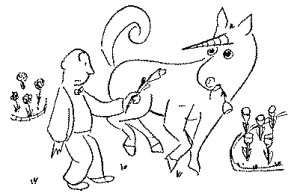 Once upon a sunny morning a man who sat in a breakfast nook looked up from his scrambled eggs to see a white unicorn with a golden horn quietly cropping the roses in the garden. The man went up to the bedroom where his wife was still asleep and woke her. “There’s a unicorn in the garden,” he said. “Eating roses.” She opened one unfriendly eye and looked at him.
Once upon a sunny morning a man who sat in a breakfast nook looked up from his scrambled eggs to see a white unicorn with a golden horn quietly cropping the roses in the garden. The man went up to the bedroom where his wife was still asleep and woke her. “There’s a unicorn in the garden,” he said. “Eating roses.” She opened one unfriendly eye and looked at him.
The original Thurber illustration .
“The unicorn is a mythical beast,” she said, and
turned her back on him. The man walked slowly downstairs and out into the garden. The unicorn was still there; now he was browsing among the tulips. “Here, unicorn,” said the man, and he pulled up a lily and gave it to him. The unicorn ate it gravely. With a high heart, because there was a unicorn in his garden, the man went upstairs and roused his wife again. “The unicorn,” he said,”ate a lily.” His wife sat up in bed and looked at him coldly. “You are a booby,” she said, “and I am going to have you put in the booby-hatch.”
The man, who had never liked the words “booby” and “booby-hatch,” and who liked them even less on a shining morning when there was a unicorn in the garden, thought for a moment. “We’ll see about that,” he said. He walked over to the door. “He has a golden horn in the middle of his forehead,” he told her. Then he went back to the garden to watch the unicorn; but the unicorn had gone away. The man sat down among the roses and went to sleep.
As soon as the husband had gone out of the house, the wife got up and dressed as fast as she could. She was very excited and there was a gloat in her eye. She telephoned the police and she telephoned a psychiatrist; she told them to hurry to her house and bring a strait-jacket. When the police and the psychiatrist arrived they sat down in chairs and looked at her, with great interest.
“My husband,” she said, “saw a unicorn this morning.” The police looked at the psychiatrist and the psychiatrist looked at the police. “He told me it ate a lilly,” she said. The psychiatrist looked at the police and the police looked at the psychiatrist. “He told me it had a golden horn in the middle of its forehead,” she said. At a solemn signal from the psychiatrist, the police leaped from their chairs and seized the wife. They had a hard time subduing her, for she put up a terrific struggle, but they finally subdued her. Just as they got her into the strait-jacket, the husband came back into the house.
“Did you tell your wife you saw a unicorn?” asked the police. “Of course not,” said the husband. “The unicorn is a mythical beast.” “That’s all I wanted to know,” said the psychiatrist. “Take her away. I’m sorry, sir, but your wife is as crazy as a jaybird.”
So they took her away, cursing and screaming, and shut her up in an institution. The husband lived happily ever after.
Moral: Don’t count your boobies until they are hatched.
__________________Now check out the film below if you haven’t seen it recently.
Directed by Bill Hurtz
Story by James Thurber
Animation by Phil Monroe, Rudy Larriva, Tom McDonald
Design & Color by Robert Dranko
Music by David Raksin
Production Manager Herb Klynn
Produced by Stephen Bosustow
Articles on Animation &UPA 05 Jun 2007 08:13 am
Dave Hilberman by John C.
Here’s an excellent article John Canemaker wrote back in 1980. It talks about Dave Hilberman’s involvment in the Disney Strike. Hilberman, of course, was one of the initial founders of UPA with Zach Schwartz. When John Hubley & Phil Eastman came to them with the completed storyboard and the contract for Hell Bent for Election, their studio took off. Eventually, they sold out to Steve Bosustow and opened their own commercial studio in NYC, Tempo.
Thanks to John Canemaker for permission to post this.
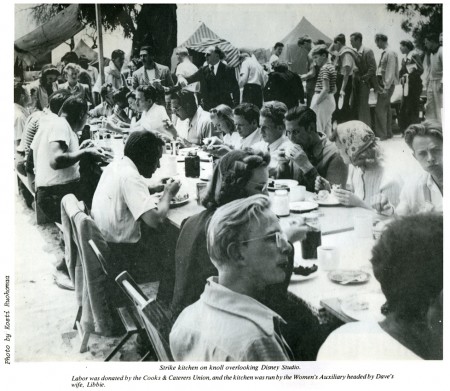 4
4
Animation Artifacts &Story & Storyboards &UPA 04 Jun 2007 07:35 am
OomPahs Storyboard
- I’ve long been a fan of T.Hee‘s work. I think I’ve said that before. When I saw some pages on ebay of the storyboard for The OomPahs, I had to buy them (at a not too expensive price.)
The short was a 1952 UPA film directed by Bobe Cannon. The film’s music score was by Ray Sherman who worked with Ben Pollack’s group, the “Pick-a-rib Boys.”
T. Hee shared the design of the film with Jules Engel who did color work, and the animation was by Roger Daley, Bill Melendez and Frank Smith.
The film is not one of my favorite UPA shorts. I find the style interesting but the story (which to me seems to be a variation of Warner’s I Love To Singa, which was a take on Jolson’s Jazz Singer) is a jazz vs classical music riff. The film seems to talk down to its audience a bit. This was a frequent problem with a number of the UPA films. I find Marvin Miller’s voiceover to be the biggest difficulty in this regard. The voiceover tracks rarely live up to the graphics – though I think the music choices are usually brilliant, despite the low budgets the composers had.
The pages I have obviously are not consecutive in number, but they’re a good sampling.
The first of the pages is a rough version of the second. It’s interesting to see how little varied they are. They are all drawn lightly (I had to darken the linework a slight bit in photoshop), but the rough is even lighter.
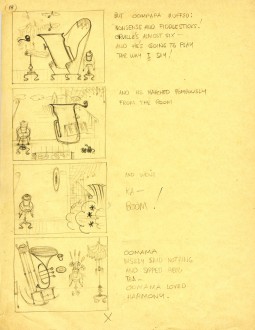 1
1 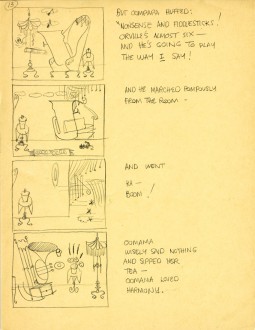 2
2
#1 is a rough version of #2. Both are page 13.
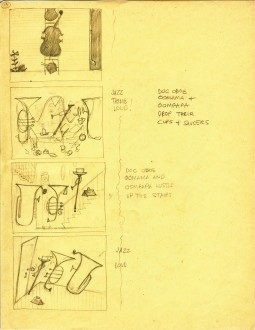 3
3 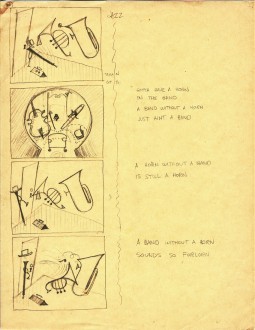 4
4
#3 is a final of pg. 19 & #4 is a final of page 20.
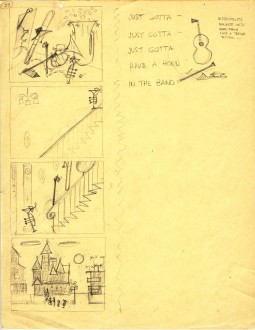 5
5
# is a final of pg. 23.
To see a couple of layout drawings for this short, from Hans Walther‘s collection, go to site here and here.
Comic Art &Commentary &Daily post &Fleischer 03 Jun 2007 08:11 am
Willard Bowsky et al
There are a number of interesting posts I’d like to call to your attention:
- First and foremost, Joe Campana on his site, Who and Where, has a post about Fleischer animator Willard Bowsky who died in battle during World War II.
Bowsky was a big guy at the Fleischer studio, and he’s rarely reaped the praise deserved for his work there. He was one of those at Fleischer’s who moved into the position of animator when there was a virtual exodus for the West Coast by many of Fleischer’s animators. Losing Dick Huemer, Sid Marcus, George Stallings and George Ruffle left only Ted Sears and Grim Natwick as animators. Suddenly Al Eugster, Shamus Culhane, George Cannata, Seymour Kneitel, Bill Henning and Willard Bowsky all received promotions.
Over the years I’d asked quite a few of the Fleischer veterans, who I’d met, for some information about Bowsky, but rarely did I get more than an anecdote about him.
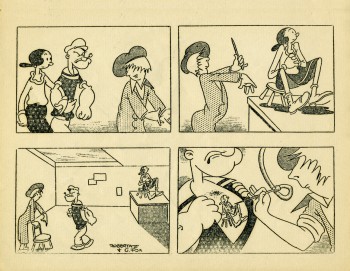 This is the sort of comment I heard. It comes from Shamus Culhane‘s book Talking Animals and Other People. (I’m not one to take Culhane’s usually biased comments verbatim, though undoubtedly there’s some truth in the statement.
This is the sort of comment I heard. It comes from Shamus Culhane‘s book Talking Animals and Other People. (I’m not one to take Culhane’s usually biased comments verbatim, though undoubtedly there’s some truth in the statement.
- Within a very short time some of the neophyte animators began to exhibit real talent as filmmakers. One was Willard Bowsky. He was about twenty-one at the time, a loudmouthed, opinionated fellow, who had a ready answer for every problem, political, artistic, or ethnic. He was probably the only person in the studio who was openly anti-Semitic. It didn’t seem to bother Max or Dave, even when people complained. While they admitted that it was probably true, they had none of the fierce defensiveness about Jewishness that developed later as a result of the rise of the Nazis.
According to the standards of the studio, Willard drew very well and had a great appreciation for contemporary music, so he was given sound tracks like “Minnie the Moodier” and “Stick Out Your Can Here Comes the Garbage Man.” He would even go into ecstasies over Cab Calloway records.
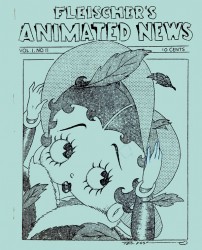 With my background of classical music, I thought Calloway sounded like jibberish and avoided those assignments like a plague. While Bowsky really couldn’t draw well enough to compete with West Coast films, he did make some of the better jazz cartoons in the studio because he loved the music.
With my background of classical music, I thought Calloway sounded like jibberish and avoided those assignments like a plague. While Bowsky really couldn’t draw well enough to compete with West Coast films, he did make some of the better jazz cartoons in the studio because he loved the music.
Willard lived at home with his parents and took no part in the usual Saturday night saturnalias. He was what one might call a pre-McCarthy, gung ho, ail-American Babbitt, an avid reader of the New York Mirror, with social convictions to match. He believed that all the unemployed were just being lazy, and intimated that anybody with ambition could succeed in this country, freely offering himself as a shining example.
Joe Campana really fills in a lot of gaps with his extraordinary post that details a lot of Bowsky’s life and final efforts during the war. Who and Where is becoming one of the better sites out there.
- I’m pleased to see that Will Finn has entered the Blog-writing fray. I love a good, new articulate voice to attend to. Check out his site. I’ve attached his link to my regulars. Thanks to Cartoon Brew for alerting us.
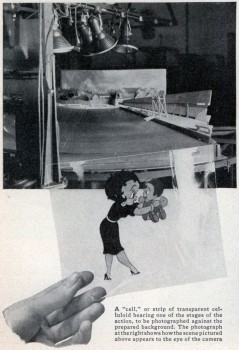 - Here’s an article from a 1936 issue of Popular Science showing how the 3D backgrounds were created for the Fleischer cartoons. The image to the left, obviously, comes from this article.
- Here’s an article from a 1936 issue of Popular Science showing how the 3D backgrounds were created for the Fleischer cartoons. The image to the left, obviously, comes from this article.
- Hans Perk posts on his blog A Film LA a 1936 Disney document about a “Gag File.” There’s always something new to dig up about the Golden Disney years. It’s a very interesting and provocative document.
 Blue Sky reports that the Tinkerbell film is finally shaping up having been wholly reworked by John Lasseter. This means that the trio of “Fairy” films can move forward. A cgi Tink, voiced by Brittany Murphy, will be coming our way. Can’t wait.
Blue Sky reports that the Tinkerbell film is finally shaping up having been wholly reworked by John Lasseter. This means that the trio of “Fairy” films can move forward. A cgi Tink, voiced by Brittany Murphy, will be coming our way. Can’t wait.
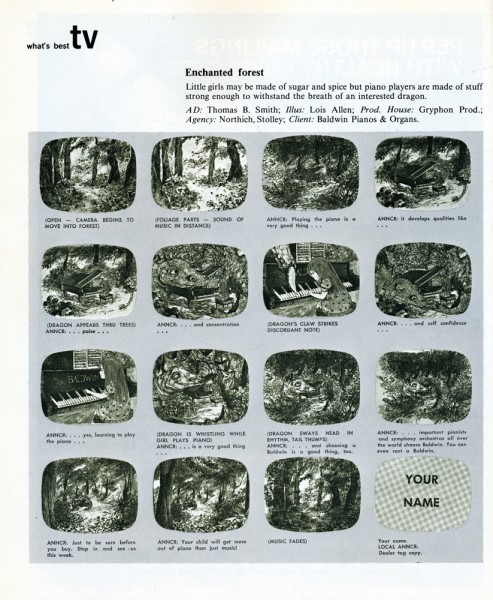 – Finally, I received an email from Howard Beckerman after meeting him at Amid Amidi‘s award ceremony. He said that he’d noticed my post which included the board by Gryphon Productions for Baldwin Pianos. (See the original post here.) Howard’s note reads:
– Finally, I received an email from Howard Beckerman after meeting him at Amid Amidi‘s award ceremony. He said that he’d noticed my post which included the board by Gryphon Productions for Baldwin Pianos. (See the original post here.) Howard’s note reads:
. . . I checked out your informative Splog and noticed Gryphon’s
. . . storyboard for the Baldwin Piano spot. It was directed by
. . . Ed Seeman and animated by Dante Barbetta and…me.
You never know what bit of info is going to turn up. It’s a great world.
Books 02 Jun 2007 09:52 am
Amid gets Award
- Yesterday I went to the Theater Library Association Awards. Amid Amid was being presented with his award for “Outstanding Book in the Area of Film or Broadcasting.”
The award, of course, is for Amid’s excellent book Cartoon Modern. 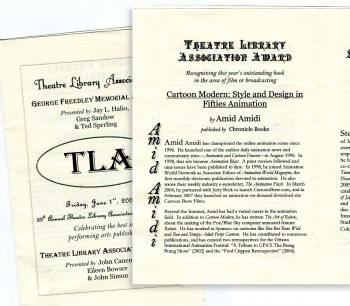
There were a number of excellent presenters giving awards to what, I presume, are excellent books. Noted critic, John Simon, gave an award to Birgitta Steene for her extensive biography on Ingmar Bergman.
Ex-film curator, Eileen Bowser, gave a Special Jury Prize to Steven Higgins (who replaced Eileen at the Museum of Modern Art) for his book Still Moving, a study of stills in MOMA’s collection. John Canemaker pre-sented the award to Amid.
(Click any image to enlarge.)
In all there were about half a dozen awards, and a dozen speeches. They were all gracious and polite, though, appropriately enough, John Simon turned the audience around with a couple of backhanded slaps. His was the most glowing and enormous praise for the book, but he admitted to not having read more than 1/4 of it as yet. (The book is a reference guide, almost 1200 pages long, so it would be hard reading.)
John’s speech offered a good introduction to Amid’s varied work and fine praise for the excellent book. Amid’s speech was short, with a funny anecdote, and polite thanks to those at TLA who supported him.
Howard Beckerman sat next to me, and it was good to see him again. It’s amazing how infrequently I meet up with many of the old friends I have in animation. This makes it even more special when I do.
John, Amid and I went to eat at a good Chinese Restaurant after the champagne toast the TLA offered.
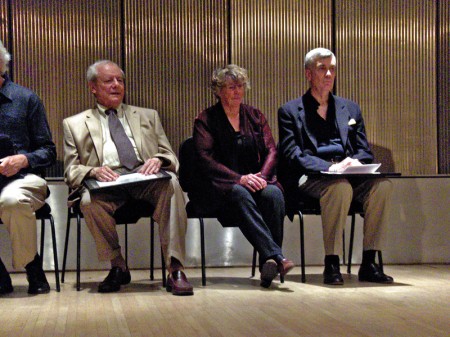
L to R: John Simon, Birgitta Steene, John Canemaker listen to
the opening remarks by TLA Book Awards Chair, Richard Wall. John Canemaker introduces Amid. Amid listens to his intro.
Commentary &Daily post 01 Jun 2007 08:06 am
Scher with Paprika
- Today, in New York, Amid Amidi will receive the Theatre Library Association Award for his book, Cartoon Modern.
Congratulations to him for the well deserved award.
John Canemaker will be presenting the award. I’ll be there to watch (and give some notes tomorrow.)
- Last year the NY Times featured monthly reports by artist/illustrator Maira Kalman.
I waited monthly for those visual diaries. The art was stunning. But she left off doing it several months back.
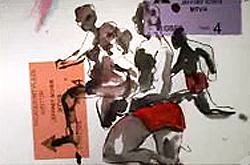 Now, the NY Times has started an animated series on its website done by animator/artist, Jeff Scher. His first piece went up on the Times and is called The Animated Life:L’Eau Life. The piece is one of Jeff’s best works, beautifully scored by Shay Lynch. (note that it loads slowly.)
Now, the NY Times has started an animated series on its website done by animator/artist, Jeff Scher. His first piece went up on the Times and is called The Animated Life:L’Eau Life. The piece is one of Jeff’s best works, beautifully scored by Shay Lynch. (note that it loads slowly.)
Unfortunately, you might have to be a subscriber of the TimesSelect to see the work.
However, I suggest you get in touch with someone you know who subscribes to the TimesSelect to see it.
 – Let me tell you about Paprika. A small group of us went last Saturday to see the film. The trailer seemed interesting and the reviews were over the top, so I was hell bent on checking it out. I’d also enjoyed Tokyo Godfather and Millenium Actress by the same director, Satoshi Kon.
– Let me tell you about Paprika. A small group of us went last Saturday to see the film. The trailer seemed interesting and the reviews were over the top, so I was hell bent on checking it out. I’d also enjoyed Tokyo Godfather and Millenium Actress by the same director, Satoshi Kon.
Paprika more resembles Millenium Actress than any other. It’s a head trip of a film that intermixes the internet with movies with dreams. I’m sorry to say, I also didn’t think it worked very well.
Right at the start of the film, we’re ushered into a dream – this is the first and only time the same, repeating dream has a beginning. The dream is interrupted as we learn that a red-headed nymph of a character, Paprika, is sharing dreams with a hard-boiled detective who is trying to solve a murder mystery. His time is up, and Paprika runs off to the lab where she turns into a scientist, Chiba. The doppelganger Chiba cum Paprika doesn’t work at all, since we don’t really know who or why one is the other.
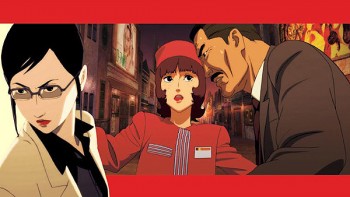 The dream machine is stolen by someone within the company – we’re never quite sure why though somehow he’ll control the world with it – and the remainder of the film is 90% dream repetition. You remain engrossed spending two hours trying to unravel the story, but in the end you’re not quite sure who is what and where you are or why?
The dream machine is stolen by someone within the company – we’re never quite sure why though somehow he’ll control the world with it – and the remainder of the film is 90% dream repetition. You remain engrossed spending two hours trying to unravel the story, but in the end you’re not quite sure who is what and where you are or why?
The film definitely needed less dream and more reality. I would have liked to have known more about the real characters and why they’re so intently pursuing this dream machine. I’m not sure I understand the value of sharing my dreams with anyone. (Copyright infringement?)
Not my kind of movie. Though, I have to say, it works only on an adult level (note I didn’t say adolescent), and that’s something that probably can’t be said about any other animated feature yet screened this year. (Only Persepolis holds out hope for adding to that roster.)
Ultimately, I can say that if you’re an Anime buff, go see Paprika; if you’re not go see The Golden Door, an excellent and beautiful French/Italian film about immigrants coming to America at the turn of the 20th Century.
